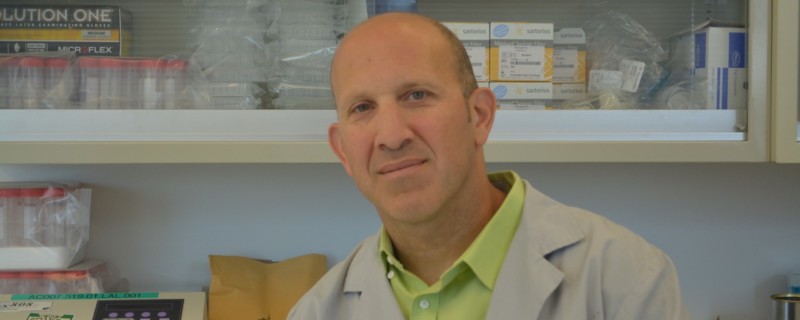
Cell Culture Media Optimization – It’s about more than just high protein titer
Podcast: Download (6.8MB)
Subscribe Here: Apple Podcasts | Spotify | RSS | More
Subscribe to the Cell Culture Dish Podcast on: iTunes | Google Play
Show Notes
We began the interview by talking about why cell culture media optimization is so important and historically why significant resources been invested on this portion of biomanufacturing. Dr. Elhofy explained that the first CHO clones were primarily chosen for their therapeutic activity not necessarily for their productivity and sometimes the highest activity cells were low producers. Researchers had to choose the clones that had the highest therapeutic index and then work on increasing productivity after. Because CHO cells are a living biomanufacturing system, there was variability both genetically and in productivity results. It was found that the biggest lever that cell culture scientists could use to control this variability was media optimization. So they began analyzing what was in the media and started developing strategies to optimize productivity.
Another movement that would impact media optimization was the removal of serum from cell culture media. Initially cells were grown in media containing serum and then in the early to mid 1990’s when serum began to be removed from media the need for optimization increased. Even 20 years later, after removing serum and achieving high titers, we are still working on optimizing media to manage various aspects of biomanufacturing.
Next I asked Dr. Elhofy to describe some of the technologies that are being used with optimization to improve culture outcomes. Dr. Elhofy described how since CHO cells are inherently unstable, cell line engineering work is being done either using site specific engineering tools like CRISPR or through large scale mutagenesis followed by clone selection to create a more stable cell line. In addition, site directed engineering can be used to create better glycosylation profiles or other desirable product quality traits.
Another tool that is being used in combination with cell culture media optimization is to transfect directly into CHO cells rather than transfecting first into HEK293. By transfecting directly into CHO cells you can avoid changes in protein performance and quality that comes with the change in cell lines.
We then went on to discuss what is there still to be gained with media optimization, since most companies have achieved acceptable or high levels of protein titer. Dr. Elhofy described the variability that still exists from run to run and how this variability can lead to changes in protein quality. So one of the goals of optimization now is to increase culture control. This increased culture control results in more control over the entire process including factors like length of culture run and as a result more accurate manufacturing plans.
Another area that can be improved through optimization is protein consistency. Factors like osmolality and pH can change glycosylation profiles, which changes the efficacy of the proteins and media optimization can create more consistency and thus improved protein quality profiles from lot to lot.
We also reviewed the specific benefits that optimization can provide in high titer culture that may be already producing 3g/L or more. Dr. Elhofy stated that with the introduction of biosimilars there would be competitive pressure to lower the cost of goods. Anytime you can increase titer you have the opportunity to lower pricing or increase margins.
Higher titer can also impact run times by adjusting protein expression timing to earlier in the run, run times overall can be shortened. If that occurs, cost can be reduced by shortening manufacturing time or by conducting fewer runs per year.
Lastly I asked Dr. Elhofy where the Cell-Ess products fit into cell culture media optimization, particularly in areas where there is already high productivity. He explained that Cell Ess is an animal component free, chemically defined media supplement that promotes increased titer and better consistency. Cell Ess has the ability to deliver lipids and cholesterol using a novel mechanism. It also provides benefits in the way that energy is provided to the cells. Essential Pharmaceuticals has found that Cell Ess increases titer without increasing viable cell density. This is important because recent approaches to increasing titer have been to increase viable cell density, but this creates issues around increasing host cell protein and also puts more pressure on downstream purification to manage an increase in the number of cells. So Cell Ess provides a tool for optimization that can be used at Day 0 or also as a feed strategy. Essential Pharmaceuticals has found increases in titer at 20% or greater and increases in productivity at 30% or greater.
For more information on the Ess line of products, please visit www.cell-ess.com or call Essential Pharmaceuticals, LLC at 1-844-ESS-PROD (377-7763).
*This interview was conducted by telephone.
Dr. Adam Elhofy, Ph.D., CSO. developed the core technology for the Ess line of products and aided in creating patents around novel uses of materials. Dr. Elhofy has over 14 years of scientific research experience in the areas of immunology, neuroscience, and oncology. He was funded by both the National Institutes of Health and the Multiple Sclerosis society as an investigator at Northwestern University Medical School. His doctoral research won him the award of the Top 5 trainee scientists by the American Association of Immunologists. Dr. Elhofy has 14 scientific publications in peer reviewed journals. He has played a variety of roles with start-up biotech companies ranging from Principal Investigator to Director of Corporate Development.